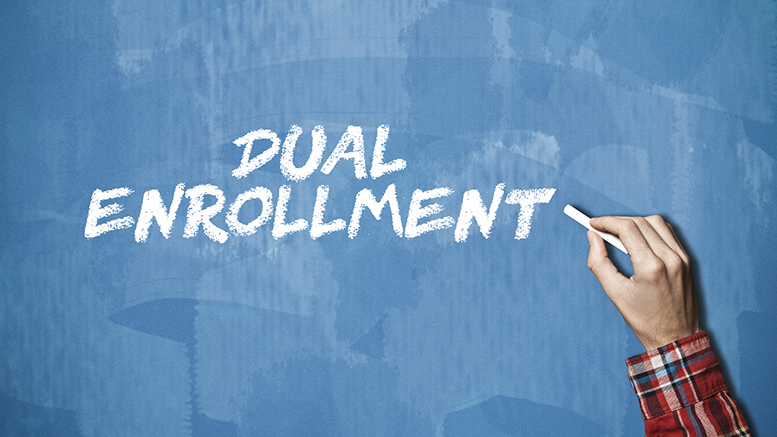Students who take college credit courses in high school are more likely to enroll in postsecondary education – including community colleges – after graduation and earn a degree or credential, according to a new Iowa Department of Education report.
Like in many other states, dual enrollment has taken off in Iowa over the past two decades, increasing nearly 6% annually from 2004 to 2020, reaching 51,800 unduplicated students in 2019-20 academic year, the report says. Jointly enrolled students also comprised more than 40% of community college enrollment that year. Eight of Iowa’s 15 community colleges had higher rates than that.
The study tracked 29,000 high school graduates from the class of 2011 over an eight-year period and examined postsecondary enrollment, persistence and tuition, time to award and more.
More than 87% of former dual-enrollment students were attending a postsecondary institution within eight years of graduating high school, compared to 67% of students in the studied cohort who did not dually enroll, says the report, which is Iowa’s first longitudinal look at joint (or dual) enrollment cohort data. Nearly 62% of former jointly enrolled students entered an Iowa community college in that time period, compared to about half of students in the cohort who didn’t dually enroll.
Out of the 17,508 high school students from that class who earned college credit in high school, 76% enrolled in college immediately after graduating, and of those, 59% achieved a degree within eight years. In comparison, half of students who did not earn college credit in high school immediately enrolled in college. Of those, one-third completed a degree or transferred during the same time frame.
The report also shows that jointly enrolled students were less likely to drop out of college, earn more college credits (which results in savings on college costs) and attain a credential faster, including associates and bachelor’s degrees.
Areas to watch
In Iowa, most of the dual-enrollment students attended a four-year college upon graduating from high school. Of the 13,224 jointly enrolled students who went to college right after high school, 56% enrolled at a four-year institution, while 44% attended a community college.
“Generally, the higher the number of credits earned while in high school, the higher the percentage of those who immediately enroll in a four-year college/university,” the report says.
One area in Iowa’s dual-enrollment effort that may need more attention is diversity: 8.8% of jointly enrolled students were people of color. In comparison, non-White students comprised 11.5% of the total student population from the graduating class of 2011.
Other stats
Additional report highlights from the graduating class of 2011 include:
- 60.4%: The percentage of students who earned college credit while in high school.
- 11.2: The average number of credit hours earned by jointly enrolled students while in high school, which represents a potential savings of $1,474 per student.
- 3.7 years: The average length of time to complete a postsecondary award for jointly enrolled students, compared to 4.0 years for students who enrolled in college without having earned college credit while in high school.
Future research will look further into equity gaps in joint-enrollment participation, whether joint-enrollment course type affects enrollment and completion rates, and if earning a postsecondary award while in high school impacts further postsecondary education and employment decisions.

